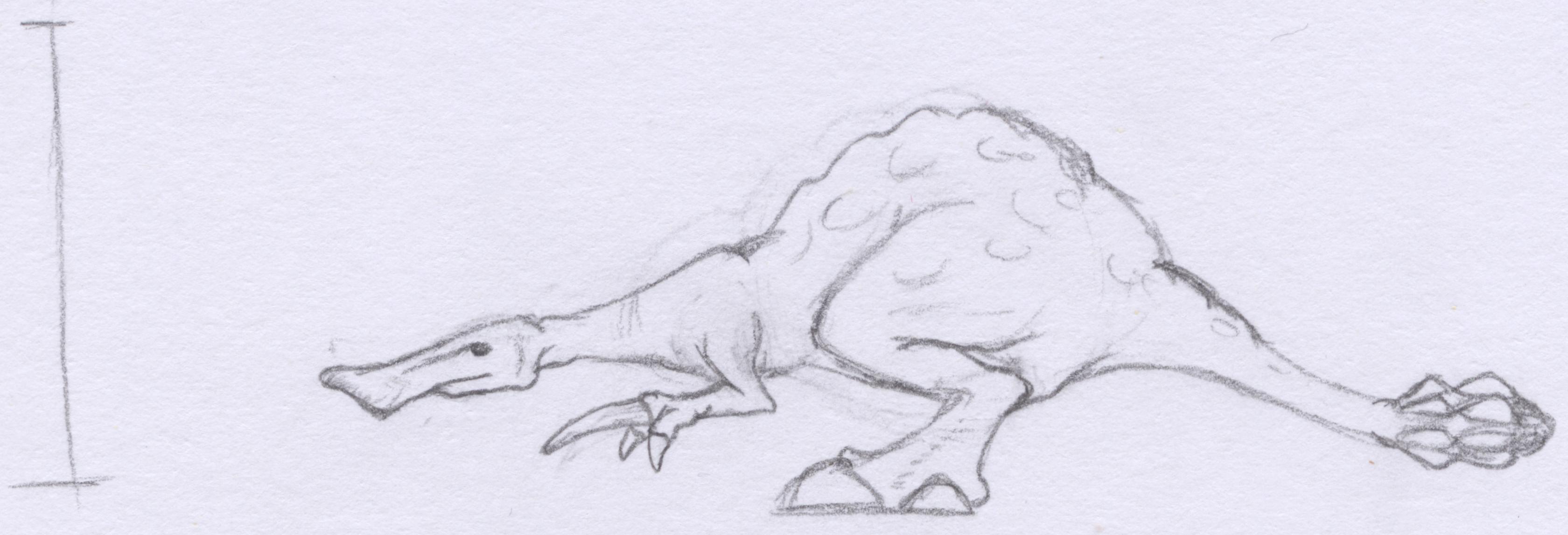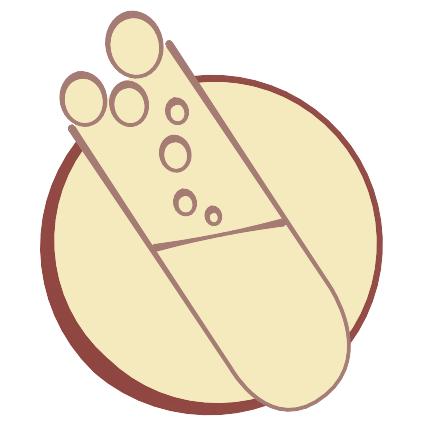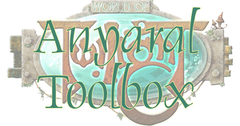Eavu
Eavus can be found throughout the known world, and while they are most numerous in and around forests, it is not uncommon to find them in marshlands, meadowlands and grasslands, and the drier brush of mountains. They are not known to inhabit deserts at all however.
In size eavus are of a length comparable to an enuk or baruk, though they are quite a bit shorter than an enuk and less massive than a baruk. They are bipeds who have forearms. Their hands have a very long claw on their middle digit, which continues to grow in length as they stage from jenta to sempa to kopa. Despite the formidable appearance of this claw, the eavu are relatively docile. The claw is used to assist them in digging in the ground (more on this later). Another distinctive trait of eavus is their tail. The kopa of the species have large bone growths on the end of their tail which they use for defense of themselves and the herd. The sempa may begin to show small growths of these, which indicate that they are beginning to advance on to the kopa stage. The most distinctive physical feature however, which is shared by all eavu, is their long, large, spade-shaped noses. With nostrils set high and back on their snout, the nose of an eavu is surprisingly hard. They have a highly developed sense of smell. They use this to their advantage in finding various edible roots and garkrid under the ground, which makes up the majority of their diet. Their hardened noses and long claw allow them to dig far into the ground to find their prize.
A Favorite food of eavus is the dredu garkrid, which is also highly sought by the fubarnii of the Empire, and not without fans in the lands of the devanu as well. Since it is well known that the meat of eavu is oily and bitter in taste, for many generations eavu were ignored at best and at worst hunted or trapped as an annoyance for their tendency to invade gardens. This continued until an unknown fubarnii captured an eavu and trained him to sniff out the elusive garkrid to be gathered for her own use. This fubarnii remains unknown, as there is no consensus on exactly who she was, and it seems nearly every city and village has a legend that the first to domesticate the creatures was from their own town.
Eavus are not easily trained, or controlled for that matter, but their skill makes it worth the effort for the farmer who has the spare time and can afford to feed them. They are not stupid beasts however. Eavus can be quite intelligent and clever for simple animals, and owners often must go to great lengths to keep the beasts out of their gardens, cellars and cupboards. Their talent for sniffing out the desired garkrid has lead to the common phrase ʼa nose like an eavuʼ to mean that a person has a talent for finding the truth, a solution, etc. But their tendency to create problems has also caused this expression to be a subtle slight to a personʼs character as a troublemaker or unwanted nosy person, so tone in speech is essential when using the phrase.

An Eavu Kopa
Author(s): Laughing Ferret

